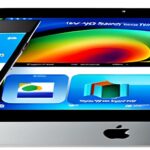Output Device Of Computer
Table of Contents
An output device is a computer component that is used to produce the final result of processing data by a computer. Output device of computer convert the processed data into a form that can be understood by humans or other systems. Some common examples of Output Device Of Computer include:

- Monitors/Displays: Used to display text and images on a screen
- Printers: Used to produce a hard copy of text and images
- Speakers: Used to produce sound
- Projectors: Used to display images or videos on a large screen
- Headphones: Used to listen to audio privately
- Plotters: Used to produce large format outputs such as architectural or engineering drawings
The type of output device used depends on the specific needs and requirements of the task being performed. Output devices are an essential component of any computer system, as they enable users to access and interact with the processed data.
Click Here To Check Computer Language & Its Type
Here Some Example Of Output Device Of Computer
Monitor
A monitor is an output device used to display images and text generated by a computer. Monitors come in various forms, including CRT (Cathode Ray Tube), LCD (Liquid Crystal Display), and LED (Light Emitting Diode) displays. The most common type of monitor used today is the flat-screen LCD monitor. Monitors typically connect to a computer via a cable, such as a VGA, DVI, HDMI, or DisplayPort cable, and display images generated by the computer’s graphics card.
The quality of the monitor can impact the overall user experience, with factors such as resolution, color accuracy, and refresh rate affecting the display of images and text. Monitors are widely used in both personal and professional settings for tasks such as web browsing, video editing, gaming, and office work.
Type Of Monitor
Cathode Ray Tube (CRT Monitor)
CRT (Cathode Ray Tube) monitors are old-style computer displays that were widely used before the advent of LCD (Liquid Crystal Display) and LED (Light Emitting Diode) monitors. CRT monitors work by firing electrons at a phosphor-coated screen, causing the screen to glow and produce the image. CRTs are heavy, take up a lot of desk space, and consume a lot of power, but they are still appreciated for their superior color accuracy and fast refresh rates.
LCD
An LCD (Liquid Crystal Display) monitor is a type of flat-panel display commonly used in computer monitors, televisions, and other electronic devices. It consists of a backlight behind a layer of liquid crystals that modulate the light to produce an image. The liquid crystals are controlled by an array of electrodes and polarizers to allow light to pass through and form an image. LCD monitors have replaced CRT (Cathode Ray Tube) monitors as the most popular type of display due to their lighter weight, smaller size, and lower power consumption.
LCD monitors come in a range of sizes and resolutions, with the most common sizes being 17″, 19″, 22″, 24″, and 27″. The resolution of an LCD monitor is the number of pixels that can be displayed horizontally and vertically, and higher resolutions result in a clearer and sharper image. LCD monitors can also have various features such as an adjustable stand, built-in speakers, and multiple input options.
LED
An LED monitor is a type of display that uses LED (Light Emitting Diode) technology to illuminate the screen and produce images. LED monitors are a more recent development compared to CRT (Cathode Ray Tube) and LCD (Liquid Crystal Display) monitors. They are thin and lightweight, use less power, and offer higher contrast ratios, better color accuracy, and faster refresh rates. LED monitors are widely used today and are available in various sizes and resolutions, making them a popular choice for both home and office use.
Printer
A printer is a peripheral device that produces a hard copy of documents or images stored in a computer. There are various types of printers, including inkjet printers, laser printers, dot-matrix printers, and thermal printers.
Inkjet printers use tiny jets of liquid ink to produce high-quality color images, while laser printers use toner to produce sharp black and white or color documents. Dot-matrix printers are an older technology that produce text and graphics by striking pins against an ink-impregnated ribbon to form dots on the paper.
Thermal printers are used in applications that require printing receipts, barcodes, or labels, and they use heat to produce images on specially coated paper. Printers can be connected to a computer through a USB cable, Ethernet, or wirelessly via Wi-Fi or Bluetooth.
Types of Printer
There are several types of printers, including:
Inkjet printers: These use tiny jets of liquid ink to produce high-quality color images and text. They are widely used for home and office printing and are known for their affordability and versatility.
Laser printers: These use toner instead of ink and produce sharp text and graphics. They are fast, efficient, and suitable for high-volume printing.
Dot-matrix printers: These use a print head that strikes pins against an ink-impregnated ribbon to form dots on the paper. They are an older technology, but are still used for printing multi-part forms.
Thermal printers: These use heat to produce images on specially coated paper and are commonly used for printing receipts, barcodes, and labels.
Photo printers: These are specialized inkjet printers that are specifically designed for printing high-quality photographs.
Multi-function printers (MFPs): These are devices that combine printing, scanning, copying, and faxing capabilities into one machine.
3D printers: These are specialized printers that build physical objects layer by layer from a digital file, creating a three-dimensional object.
speaker
A speaker is an electronic device that converts an electrical audio signal into sound waves that can be heard. It consists of a driver (or transducer), a cone or diaphragm that vibrates to produce sound, and a housing that protects the driver and directs the sound. There are different types of speakers, including:
Dynamic speakers: These are the most common type of speaker and are used in most consumer electronics. They use a coil of wire and a permanent magnet to produce sound.
Electrostatic speakers: These use an electrically charged diaphragm that is positioned between two metal plates to produce sound. They are known for their high accuracy and clarity, but are relatively expensive.
Planar magnetic speakers: These use a flat diaphragm that is surrounded by a series of magnetic fields to produce sound. They are known for their clear and detailed sound, but are also relatively expensive.
Horn speakers: These use a horn-shaped structure to amplify and direct the sound produced by a driver. They are commonly used in PA systems and live music performances.
Bookshelf speakers: These are compact speakers that can be placed on a shelf or a stand. They are widely used for home theater systems and music listening.
Floor-standing speakers: These are larger speakers that are designed to stand on the floor and deliver powerful, full-range sound.
Wireless speakers: These are speakers that can connect to a device wirelessly using Bluetooth or Wi-Fi technology, eliminating the need for a physical connection.
projector
A projector is an electronic device that projects an image from a computer or video source onto a wall or screen. It works by shining a light through a lens and using mirrors to magnify the image. There are several types of projectors, including:
Digital Light Processing (DLP) projectors: These use a microchip with tiny mirrors to reflect light and produce the image. They are known for their high contrast ratios and accurate colors.
Liquid Crystal Display (LCD) projectors: These use liquid crystal panels to modulate the light and produce the image. They are widely used for business presentations and home theater systems.
Liquid Crystal on Silicon (LCoS) projectors: These use a combination of liquid crystal and silicon technology to produce the image. They are known for their high resolution and color accuracy.
Laser projectors: These use lasers to produce the light source, resulting in bright and vibrant images. They are often used in large venues, such as concert halls and theaters.
Short-Throw projectors: These are projectors that can be placed close to the screen, making them suitable for small rooms or tight spaces.
Portable projectors: These are small, lightweight projectors that can be easily transported and set up, making them ideal for on-the-go presentations.
Projectors can be connected to a computer, a DVD player, a game console, or other video sources, and are commonly used for presentations, movie screenings, gaming, and more.
headphone
Headphones are a type of listening device that are designed to cover the ears and produce sound directly into the ear canal. They consist of a pair of drivers (speakers) that are placed over or in the ear, a headband or ear hooks that secure the headphones to the head, and a cable that connects the headphones to an audio source such as a smartphone, computer, or MP3 player. There are several types of headphones, including:
Over-ear headphones: These are headphones that have large ear cups that fit over the ears. They provide the best isolation from external noise and are known for their rich, detailed sound quality.
On-ear headphones: These are headphones that have smaller ear cups that sit on the ear. They are more compact and portable than over-ear headphones, but may not provide as much isolation from external noise.
In-ear headphones: These are headphones that have earbuds that fit inside the ear canal. They are highly portable and provide good isolation from external noise, but may not provide the same sound quality as larger headphones.
Wireless headphones: These are headphones that connect to an audio source wirelessly, eliminating the need for a cable. They use Bluetooth or Wi-Fi technology to connect to the audio source.
Noise-cancelling headphones: These are headphones that use active noise-cancelling technology to reduce external noise and provide a more immersive listening experience.
Gaming headphones: These are headphones that are designed specifically for gaming, with features such as surround sound, built-in microphones, and customizable sound profiles.
Headphones can be used for a variety of purposes, including listening to music, watching movies, making phone calls, and playing video games.
plotter
A plotter is a type of large-format printer that is used to produce high-quality, large-scale graphics and technical drawings. Unlike a standard printer, which uses ink or toner to produce an image on paper, a plotter uses a pen or a blade to draw the image on the paper. Plotters are commonly used in engineering, architecture, cartography, and other fields that require precise and accurate drawings.
There are two main types of plotters: drum plotters and flatbed plotters. Drum plotters have a rotating drum that holds the paper and moves it past the pen, while flatbed plotters have a flat surface that holds the paper stationary and a moving carriage that holds the pen.
Plotters are capable of producing high-quality drawings with precise lines and curves, and can handle large sheets of paper, making them ideal for producing blueprints, maps, and technical drawings. However, they are relatively slow compared to other types of printers, and are more expensive.
Plotters are typically used in conjunction with specialized software, such as AutoCAD, that is capable of generating the precise drawings required for engineering and design work.
type of plotter
There are two main types of plotters:
Drum plotters: A drum plotter uses a rotating drum to hold the paper, which moves past a stationary pen to produce the image. Drum plotters are capable of producing high-quality drawings with precise lines and curves, and can handle large sheets of paper.
Flatbed plotters: A flatbed plotter has a flat surface that holds the paper stationary, while a moving carriage holds the pen and produces the image. Flatbed plotters are commonly used for large-format printing and are capable of producing high-quality drawings, but are generally slower and more expensive than drum plotters.
Additionally, there are two sub-types of plotters based on the type of pen or blade they use:
Pen plotters: Pen plotters use a pen to produce the image, similar to a traditional pen plotter. They are capable of producing high-quality drawings with precise lines and curves, and can be used to create blueprints, maps, and technical drawings.
Blade plotters: Blade plotters use a sharp blade to cut through a material, such as vinyl or paper, to produce the image. Blade plotters are commonly used in sign-making and vinyl cutting applications, where they are used to create signs, decals, and labels.
Both types of plotters are used in a variety of industries, including engineering, architecture, cartography, and graphic design. They are typically used in conjunction with specialized software, such as AutoCAD, to generate the precise drawings required for their applications.



















